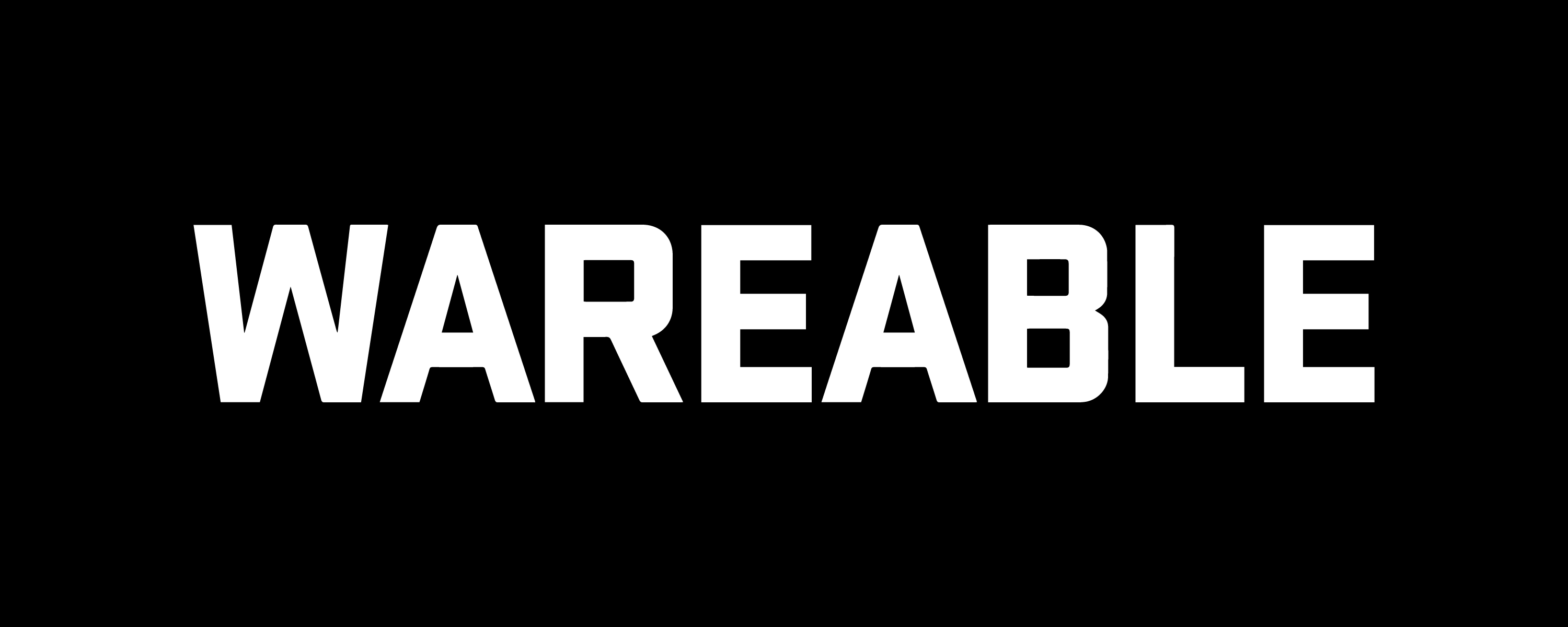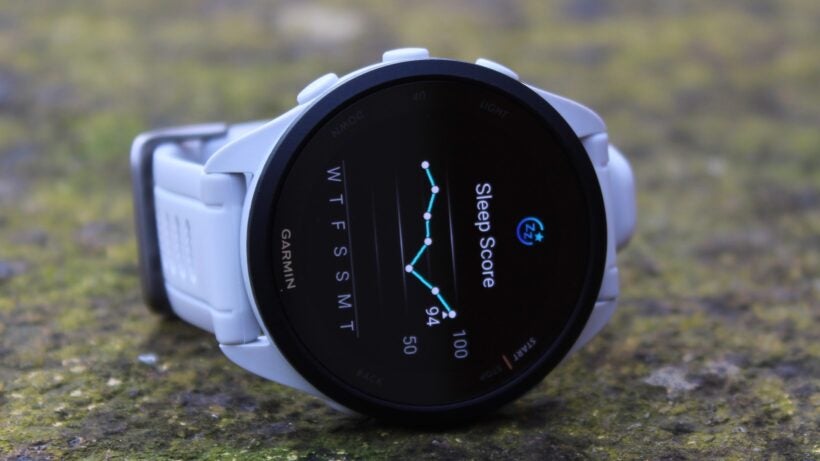We dive into all of Garmin's sleep tracking insights and analyze the tracking accuracy.
Using your Garmin for sleep tracking is one of the easiest ways to maximize the benefits of your watch—and it helps inform plenty of other insights on your tracker.
After traditionally being a weak area for the brand, it’s upped its game in recent years by adding more helpful insights into your slumber. Now, instead of just receiving a Sleep Score or Sleep Stages graph, Garmin uses this sleep data to inform Training Readiness, Training Status, and Body Battery. New for 2025, specific models can also provide insight into breathing variations.
If you’re new to tracking your sleep or curious about how it works, you might wonder how Garmin is collecting this data and how accurate it really is.
At Wareable, we’ve been using and testing Garmin’s sleep tracking for years, so we have plenty of insight into everything you need to know about the feature. Let’s get into it.
SQUIRREL_PLAYLIST_10207701
How Garmin tracks your sleep

Years ago, Garmin devices relied solely on movement—tracked by motion-sensing accelerometers—and heart rate to analyze your sleep.
Since the company debuted ‘Advanced Sleep Monitoring,’ heart rate variability—the time between each heartbeat—is now utilized to more accurately measure your time awake and the duration of each sleep stage.
To determine whether you’re awake and reading, asleep, or taking a bathroom break, and to identify what stage of sleep you’re in while you’re slumbering, Garmin employs a combination of photoplethysmography (PPG) analysis and actigraphy (ACT) data.
This takes into account the following:
- Changes in heart rate; your heart rate data is more erratic in REM sleep and lower in non-REM sleep, for example
- Changes in heart rate variability; a rise in HRV can indicate your body’s response to stress
- Any movement that’s spotted by the accelerometer.
Your ‘sleep clock’ is activated when you become still and your heart rate decreases to the levels that the watch interprets as sleep. The longer you wear the watch, the more accurate this measurement becomes based on your HRV.
Other factors that may influence accuracy include stress, sleepwalking, or alcohol consumption, all of which can elevate your heart rate and cause increased movement.
It’s also important to note that some Garmin devices now measure blood oxygen saturation and respiratory rate during the night. However, these metrics do not affect your sleep data and are presented separately instead.
Is Garmin sleep tracking accurate?

This question is almost impossible to answer, considering that the data recorded by wrist-worn wearables has consistently been shown to fall short compared to the professional equipment used in a sleep laboratory (and even the accuracy of this ‘gold standard’ isn’t particularly impressive).
With that said, things are improving all the time in this regard.
Although we’ve often been critical of Garmin’s sleep tracking in our in-depth reviews, such as in this Garmin Marq (Gen 2) review from 2023, the accuracy appears to have improved.
In a May 2025 test of Garmin’s Advanced Sleep Tracking, we found that the data (logged on a Garmin Forerunner 970) was consistently in line with that tracked by the Oura Ring 4 (which we regard as the best wearable sleep tracker overall) and Whoop 5.0.
This improvement means we would now grade Garmin sleep data among the more accurate watches on the market. It still lags in areas such as wake periods, we believe, and you do still get the odd erroneous sleep score. However, it’s almost always aligned in the key areas with Oura.

Interestingly, you can see this marked improvement in the consistency of Garmin’s sleep trend graphs, as shown above.
While our Sleep Score was previously erratic and rarely aligned with estimations from other trackers, it has evened out considerably since we switched from an older Garmin Forerunner 955 Solar to newer models. All this, of course, was found with an identical sleep routine.
Garmin sleep tracking: The insights

Garmin tracks an increasing amount from the wrist during sleep. Each morning, you’ll receive a report of your sleep, and also be able to access even more graphs in Garmin Connect.
Not every watch can provide the same level of insight, but most are accessible across the board. Here are the key features you can expect from Garmin sleep tracking:
- Sleep Score: Garmin provides a sleep score (0-100) that summarizes your sleep quality based on factors like sleep duration, sleep stages, and awake time
- Sleep Stages: Garmin devices track the duration and timing of each sleep stage (light, deep, and REM) throughout the night, as well as awake periods
- Total sleep time: The total amount of time you spent in bed and asleep is recorded
- Heart rate and respiration: Some Garmin devices also track your heart rate and respiration rate during sleep, providing a more comprehensive view of your sleep.
- Blood oxygen saturation (Pulse Ox): Some devices track your blood oxygen saturation levels during the night, offering insights into your respiratory health during sleep.
- Body movement: Body movement data is also used to help identify sleep stages and periods of wakefulness.
- Body Battery: The amount of sleep that topped up the Garmin wellness metric ‘Body Battery’ will be displayed as a 0-100 figure and a corresponding graph
- Breathing Variation (new for 2025): When measuring Pulse Ox, you can see breathing variations tagged as ‘Minimal’, ‘Few’, ‘Occasional’, and ‘Frequent’.

Your sleep data is always presented in a timeline that shows when you fall asleep and when you wake up, rather than when you get into and out of bed. If you know there’s an error here, you can manually edit these times in the Garmin Connect app or on the Garmin Connect web tool.
As we mentioned up top, Sleep History and recent Sleep Score estimations play a pivotal role in determining your Training Readiness (typically available on more premium models).
Garmin Sleep Coach

First debuting on the Garmin Venu 3 and Vivoactive 5 before rolling out to more devices, Sleep Coach is one of the latest features relating to Garmin’s sleep tracking.
As you would expect from the name, Sleep Coach is Garmin’s way of recommending a certain amount of sleep your body needs based on your current activity load, sleep history, and recovery status.
It works similarly to the Whoop Sleep Planner, but isn’t a feature we’ve personally found able to cut through the noise just yet.
We’ve explained Garmin Sleep Coach and listed compatible watches in a separate guide, for those curious to learn more about the feature.
Garmin Nap Mode

A long-requested feature, some Garmin watches can now track your naps thanks to an update that was released in 2023.
Garmin states that its algorithm categorizes any sleep periods shorter than three hours as a nap, which also influences your Sleep Score. Naps are also expected to occur outside of your usual sleeping hours.
In our initial experience testing this with the Epix Pro (Gen 2), we found it to be inconsistent in automatically detecting naps. However, things have improved somewhat since its initial release. We rarely require it, but our testing with the Forerunner 970/Fenix 8 showed some improvement.
Learn more about how to use Nap Mode on Garmin in our dedicated guide.
Is your Garmin’s sleep tracking not working?

In the past, as we’ve mentioned, we’ve found Garmin’s sleep tracking a bit on the inconsistent side – and sometimes it’s even missed our sleep tracking altogether.
With newer releases, we’re happy to say most niggles (for whatever reason) appear to have been ironed out.
That said, there are still odd occasions when Garmin users report sleep-tracking issues, so here are a few possible solutions to FAQs.
Garmin not tracking deep sleep
This used to be quite a common issue, with our Garmin sleep tracking tests often presenting sleep stages with very little – and sometimes zero – deep sleep time.
It’s an issue that’s improved over the last 12-18 months during our tests (as shown in the Epix Pro (Gen 2) review and Forerunner 965 review), though we would say that Garmin watches generally do estimate less deep sleep periods than other devices, such as Whoop or Oura.
Unfortunately, there’s no real way to coax your Garmin into offering more favorable or accurate sleep stage information – this is more just the quirks of its algorithm.
If you are experiencing continued problems, however, check out the advice below that touched on how to wear your watch during sleep to ensure tip-top accuracy.
Garmin not recording any sleep
Your watch may not track sleep for a variety of reasons.
However, the most common reason for missing advanced sleep monitoring data relates to the heart rate monitor being turned off.
We would advise checking your Garmin Sleep Mode settings first and ensuring ‘Battery Saver’ is turned off.
Alternatively, it could relate to another battery-saving mode that you have enabled, with some of the options inside the Power Manager turning off the heart rate monitoring to save juice.
You’ll also want your sleep schedule set as accurately as you can, and ensure any activity you started during the day and tagged under ‘Resume Later’ has been completed.
Missing sleep data
Perhaps your Garmin device is tracking some sleep, but the full picture is missing.
In our experience, this can often happen if you get up during the night for a prolonged period before returning to bed.
The easiest way to combat this issue is to edit the details in Garmin Connect once you have finished sleeping, which can be done once you’ve synced with your device.
‘Unmeasurable’ sleep data
If your Garmin sleep data shows certain periods as ‘Unmeasurable’, this likely relates to the fit of your device.
When your watch’s heart rate monitor loses track of your heart rate because it’s not tight enough against your skin (or is too compressed), data will be skewed.




